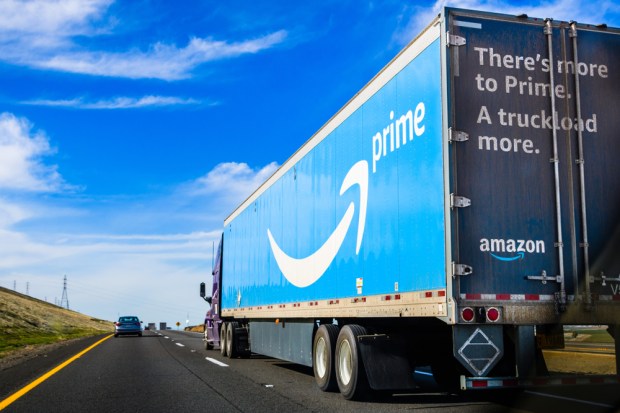Amazon’s Shipping Push Deepens Last-Mile Battle vs. UPS, FedEx and Platforms

The battle for loyalty — from merchants and consumers — may be won along the last mile.
The news Monday (Aug. 21) that Amazon would re-instate its shipping service to handle deliveries deepens the battle between the eCommerce giant, the traditional carriers like UPS and FedEx and even some of the online platforms branching more fully into delivery.
Importantly, the service will apply to packages sold on Amazon’s site and externally, but also reportedly encompasses items not stored in Amazon’s warehouses.
Of course, Amazon has been expanding its seller ecosystem, and earlier this year announced that Buy with Prime would let merchants sell their listed merchandise directly from their own websites. Amazon has said that merchants employing Buy with Prime can increase their shopper conversion rates by 25%.
Third-party sellers, as has been widely reported, have helped solidify Amazon’s ancillary revenue streams: Third-party seller services (which include logistics and fulfillment), as detailed in the company’s 10-Q, are the largest top-line contributor after net sales from its online stores. That line item grew 18% year on year to $32.3 billion in the most recent period, far outpacing the 4% growth seen in its online stores’ revenue (at roughly $53 billion).
And the latest Shipping announcement comes soon after news that Amazon will double its same-day delivery centers.
Doug Herrington, CEO of Worldwide Amazon Stores, said late last month via blog that the doubling will take place over a period of years, and noted that “across the top 60 largest U.S. metro areas, more than half of Prime member orders arrived the same or next day.”
Owning the Delivery Window
“So far this year, we’ve delivered more than 1.8 billion units to U.S. Prime members the same or next day — nearly four times what we delivered at those speeds by this point in 2019.”
By re-instating shipping, Amazon thus stands to capture more of the end-to-end consumer journey, to have a bit more control over the delivery window — and, by extension, rely less on carriers such as FedEx and UPS. The integrated services may also help the competitive positioning of programs like Amazon Flex among gig workers and freelancers.
The ripple effect may be felt most readily by UPS. As detailed in the latest annual report, UPS disclosed that Amazon represented more than 11% of consolidated revenues in 2022 and more than 15% of accounts receivable.
The demand for delivery –— though volatile depending on the sector — remains a key staple of the digital shift in retail. As noted here, at the end of last year an average of 131 million consumers across the country had online retail purchases delivered every month. That stat comes from PYMNTS’ “12 Months of the ConnectedEconomy™” report. The data show that half of consumers ordering on a retail merchant’s site opted for home delivery, 18% more than seen in the previous year.
